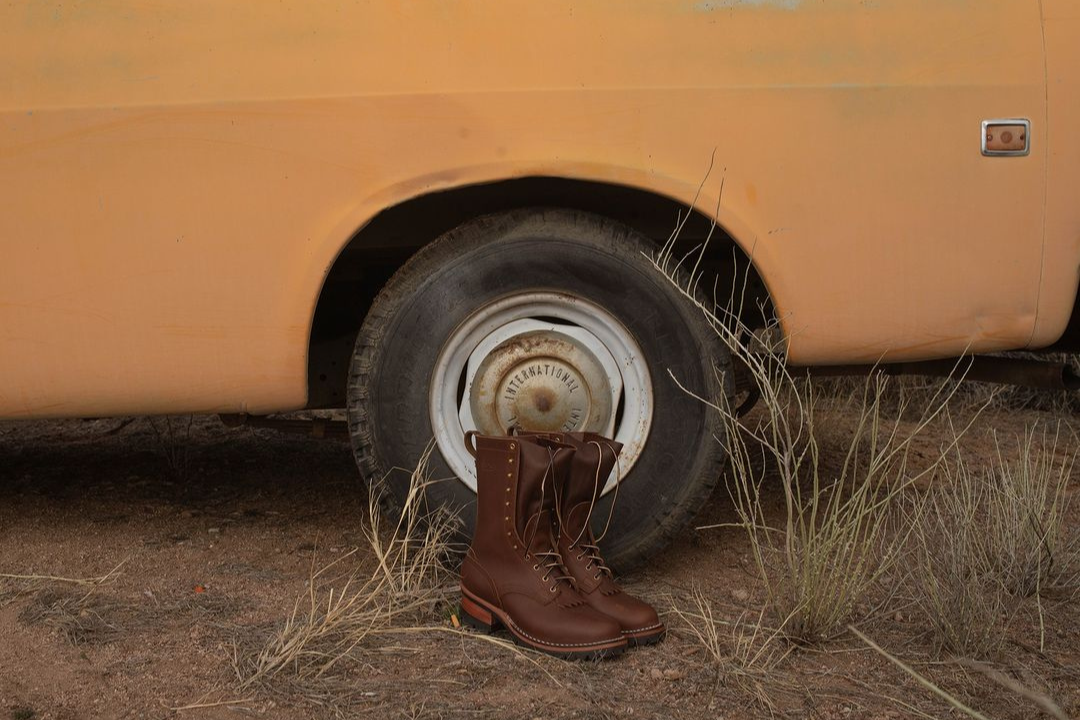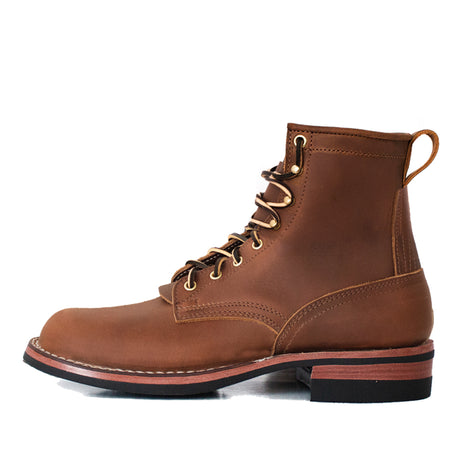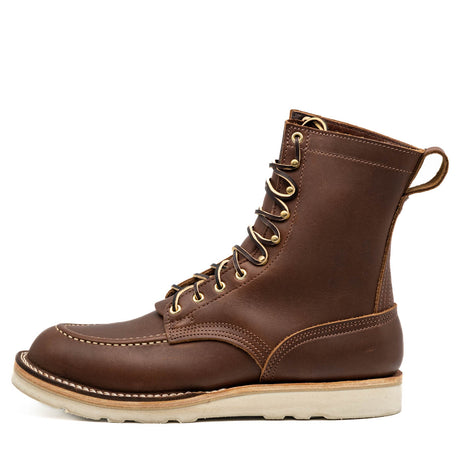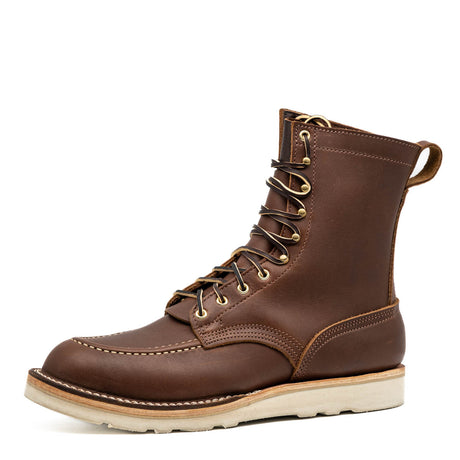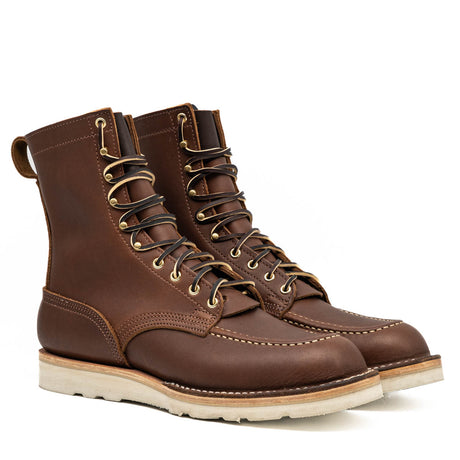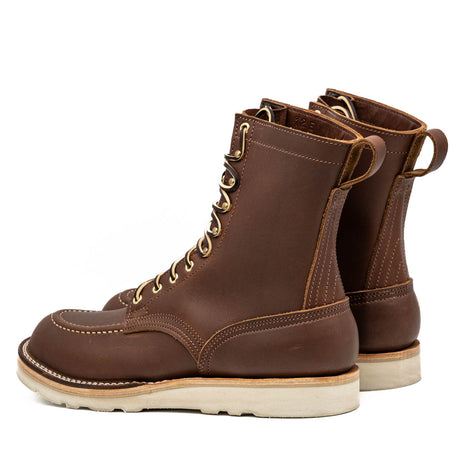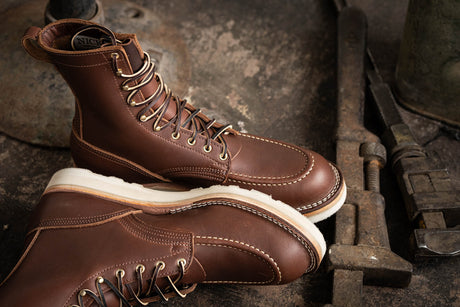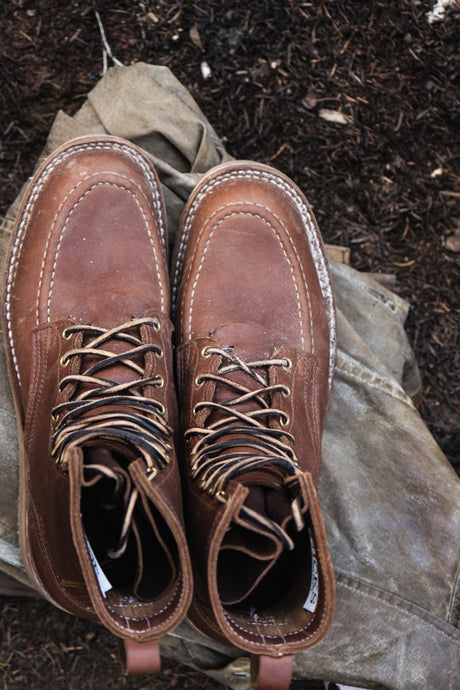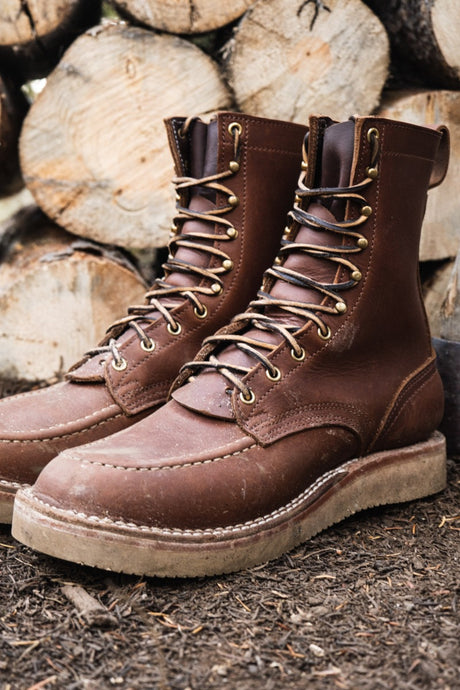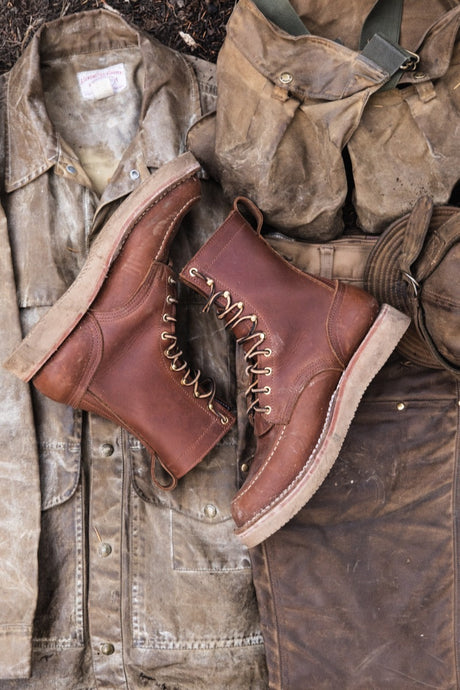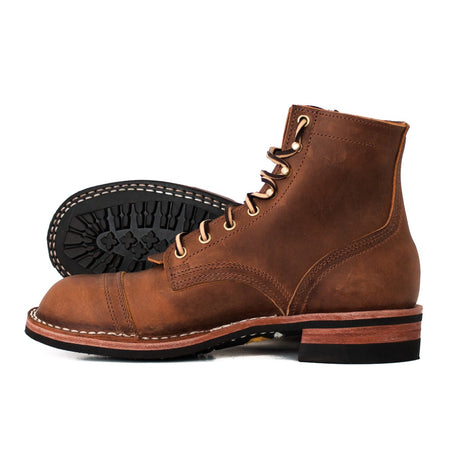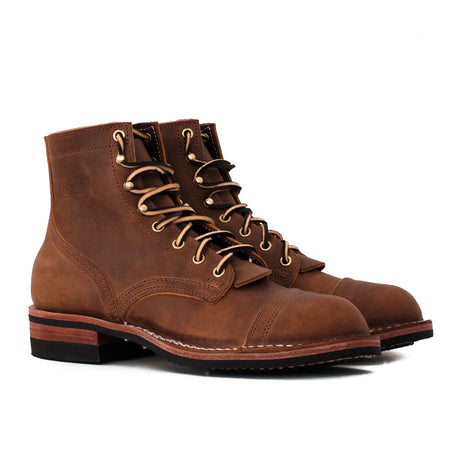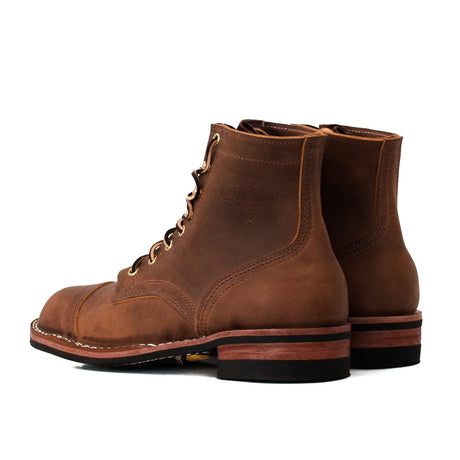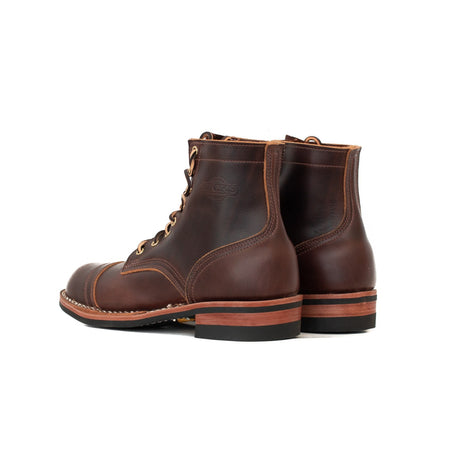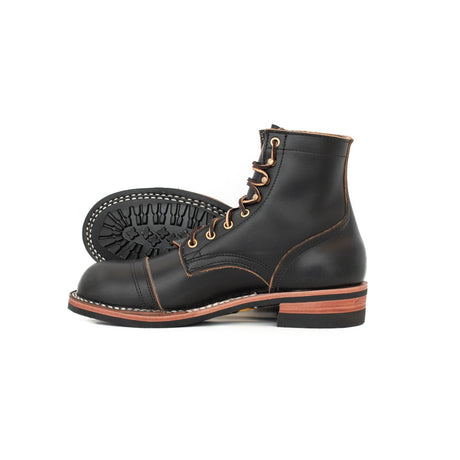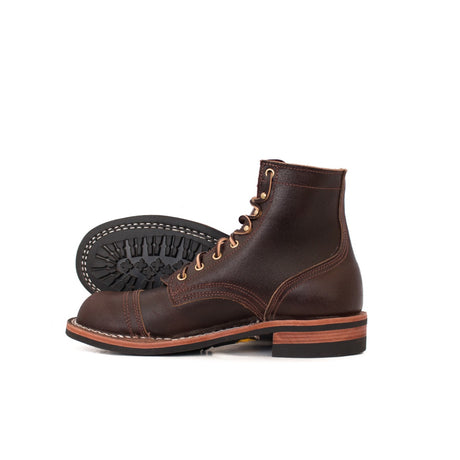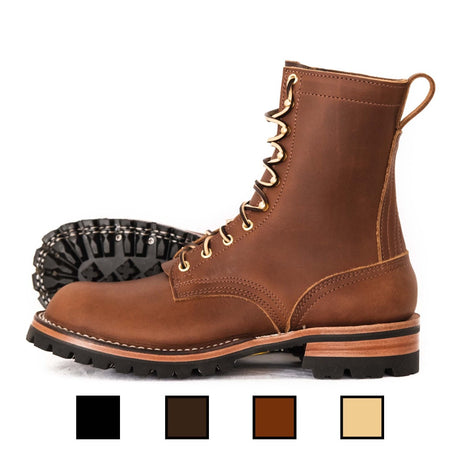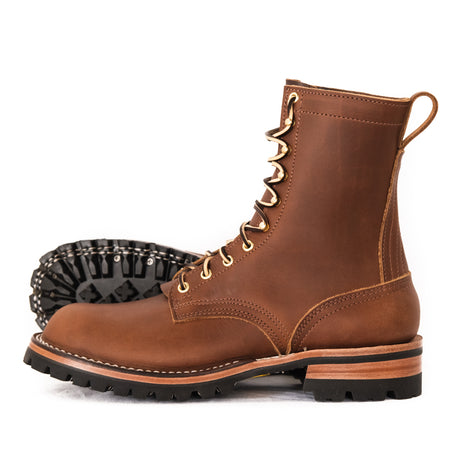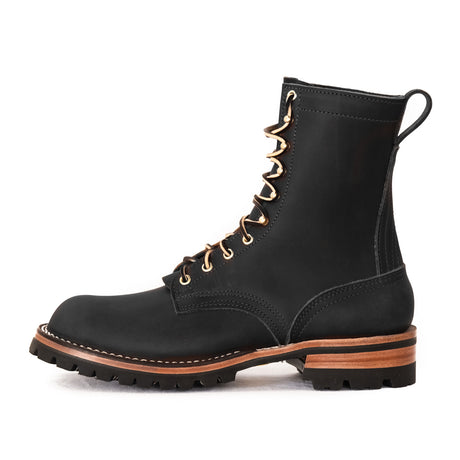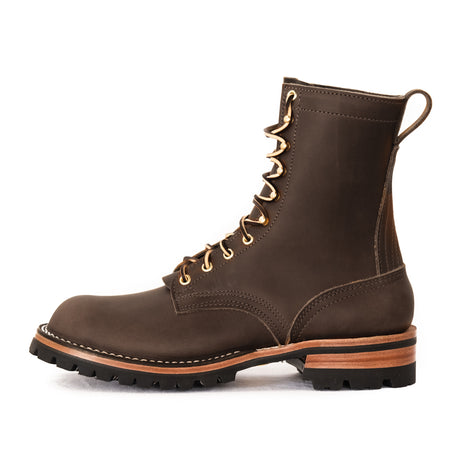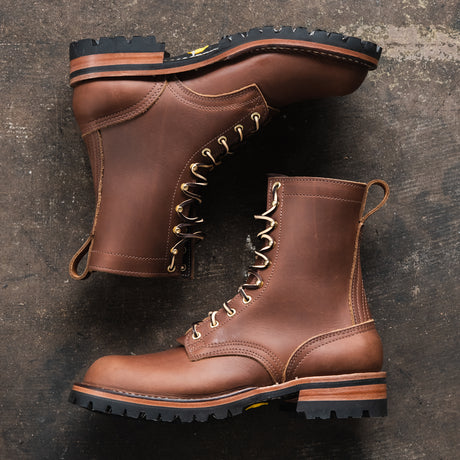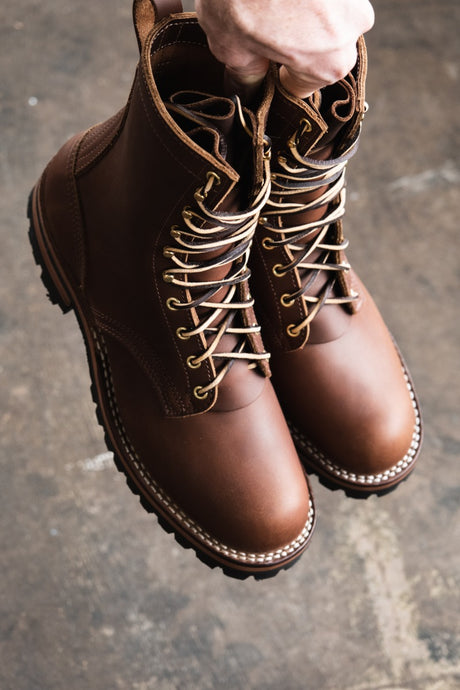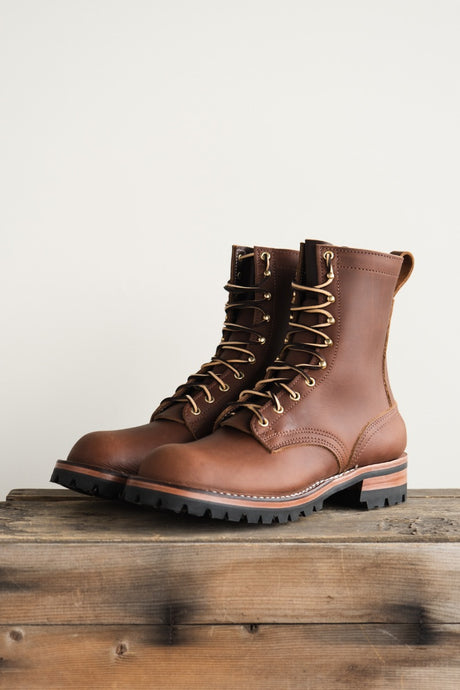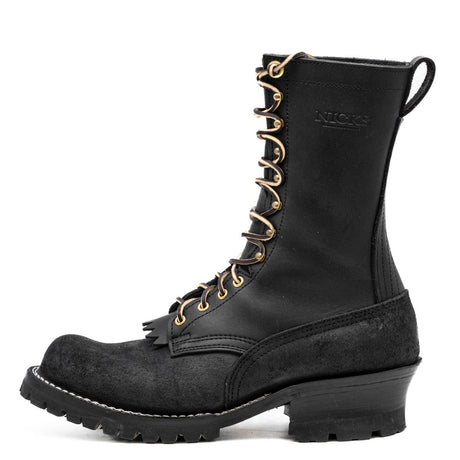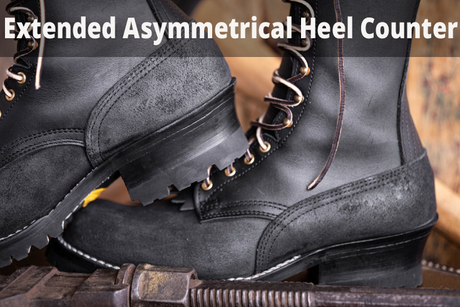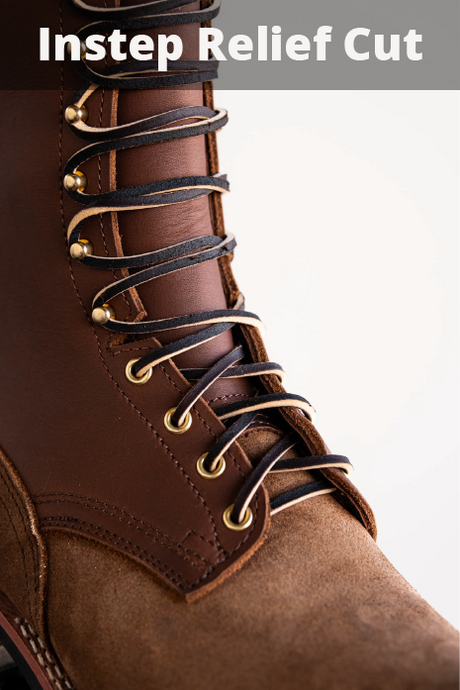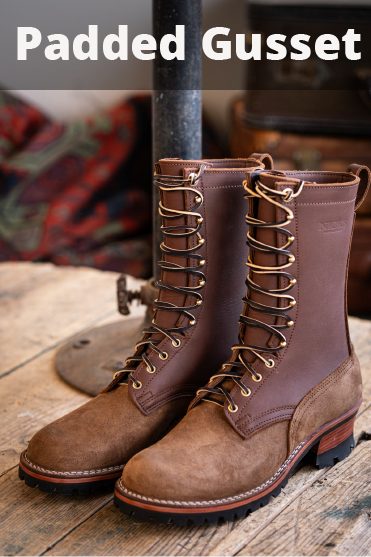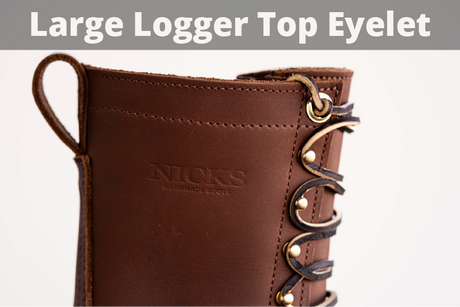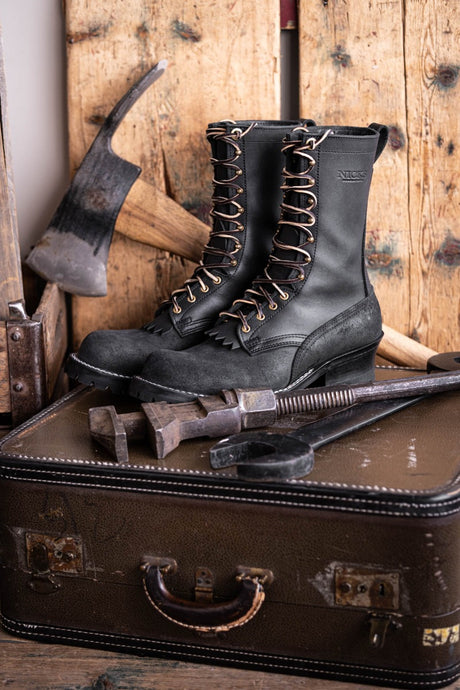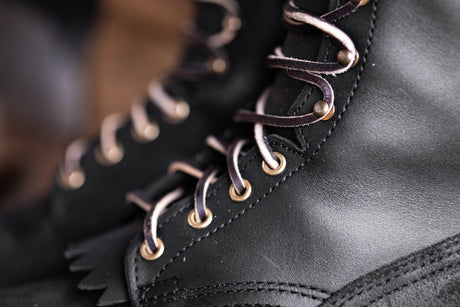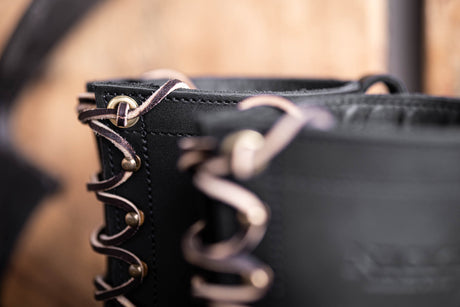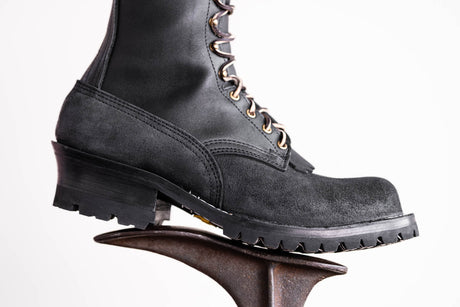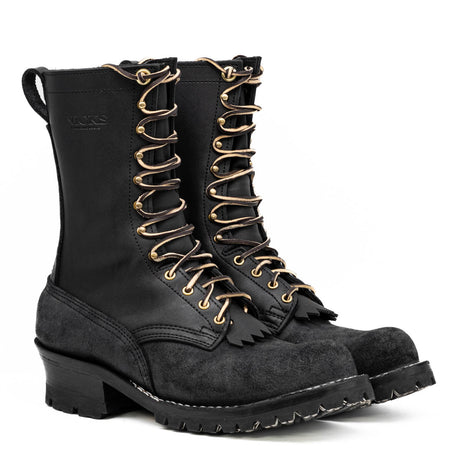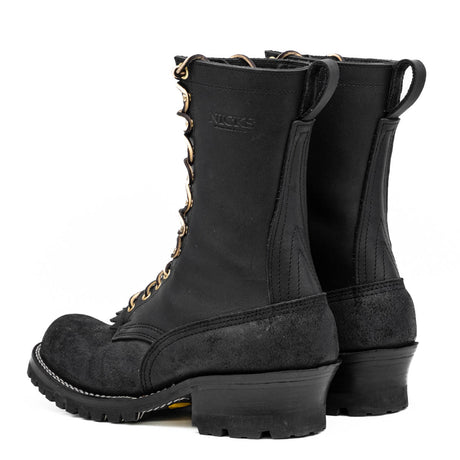Key Takeaways:
- Proper Cleaning and Drying: Before applying any softening treatments, thoroughly clean your leather boots and allow them to dry naturally, avoiding direct heat sources. This preparation ensures that treatments are absorbed effectively and evenly.
- Special Care for Different Leathers: Recognize the specific needs of different leather types—full-grain, top-grain, and suede—when choosing softening methods. Each type of leather requires tailored approaches to maintain its unique qualities and appearance.
- Regular Maintenance Routine: Establish a regular cleaning and conditioning routine to prolong the softness and life of your leather boots. This routine helps prevent common issues such as drying, cracking, and over-softening, ensuring your boots remain comfortable and durable over time.
At Nicks Boots, we are dedicated to producing durable, high-quality leather boots for both work and play. With our extensive experience in leather craftsmanship, we know the importance of boot care and ensuring a comfortable fit from the start. This guide will help you soften your leather boots for a snug and comfortable fit.
In this piece, we'll cover a range of effective techniques to make your leather boots more pliable. We'll discuss the use of natural conditioners, provide practical tips, and address common mistakes to avoid during the softening process. Our goal is to help you maintain the integrity of your boots while achieving a perfect fit.
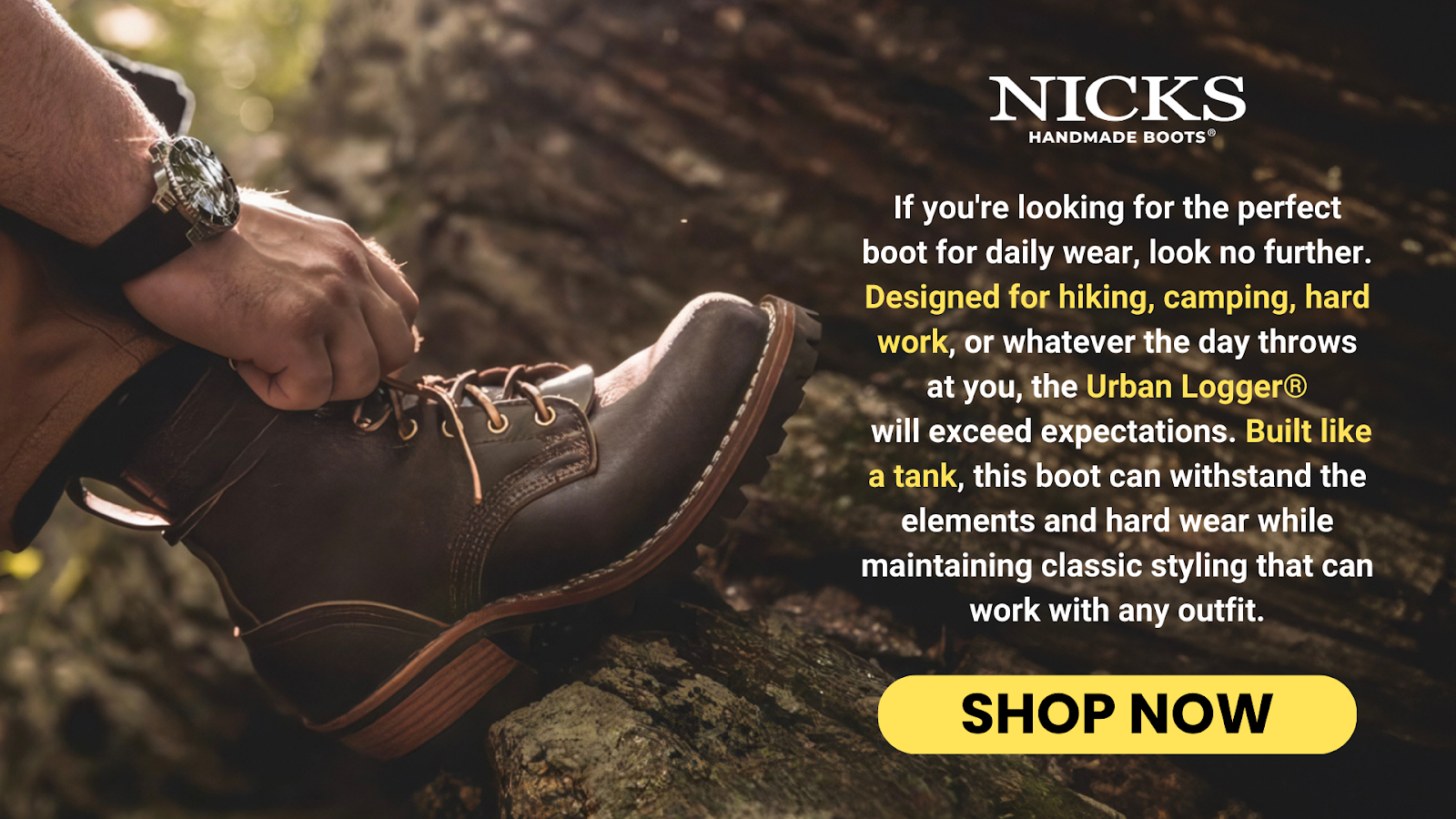
Understanding Leather Boots
Types Of Leather Used In Boots
Full-grain leather is the least processed form, showcasing the hide's natural marks and offering robustness ideal for work environments. It's thick and less treated, making it durable but initially stiff. Top-grain leather, meanwhile, is more processed to give a smoother finish and is generally more flexible, suitable for daily wear boots. Suede, derived from the underside of the animal skin, provides a soft, napped texture that is fashionable but less resistant to water and staining.
Why New Leather Boots Feel Stiff
The primary reason new leather boots are stiff lies in the tanning process, which uses chemicals and oils to ensure durability and longevity. These treatments make the leather robust enough to withstand elements but can leave it rigid until broken in. Over time, as boots are worn, the leather fibers stretch and mold to the wearer's feet, gradually increasing comfort. Regular wear and proper care can accelerate this natural softening process.
Impact Of Leather Types On Softening Methods
Full-grain leather benefits most from conditioning oils that penetrate deep into the leather, enhancing its flexibility without compromising its strength. For top-grain leather, lighter conditioners are preferable to prevent the leather from becoming overly soft and losing its shape. Suede requires special attention as it should not be treated with oils or traditional conditioners; instead, specialized sprays designed to provide flexibility while protecting its unique texture are recommended. Understanding these distinctions is crucial for choosing the right softening method and maintaining the quality of the boots.
Preparing To Soften Your Boots
- Cleaning Your Boots - Begin the softening process by thoroughly cleaning your boots. Remove any dirt, grime, or debris with a soft brush or damp cloth, depending on the type of leather. This step ensures that no particles interfere with the absorption of conditioners or softening agents, which is crucial for an even application.
- Drying Before Treatment - Once cleaned, allow your boots to dry naturally at room temperature. Avoid direct heat sources like radiators or direct sunlight, as these can cause the leather to crack or warp. Proper drying sets the stage for effective softening without damaging the material.
- Testing Softening Products - Before applying a softening agent to the entire boot, it’s wise to test it on a small, inconspicuous area. This precaution helps ensure that the product does not alter the color or texture of the leather unexpectedly. After the test, you can proceed confidently, knowing the product is suitable for your boots.
- Applying a Softening Agent - Choose a softening agent appropriate for your type of leather, and apply it evenly according to the manufacturer’s instructions. Work the product into the leather with a soft cloth, using circular motions to promote absorption. This method not only begins the softening process but also helps to condition the leather, preserving its quality over time.
Techniques To Soften Leather Boots
Using Natural Oils
Natural oils like coconut, mink, and neatsfoot oil are excellent choices for softening leather because they penetrate deeply, enhancing the flexibility and comfort of your boots. Gently apply a thin layer using a soft cloth, ensuring even coverage without oversaturating the leather. This method not only softens the leather but also enhances its water resistance and longevity. It’s important to allow the boots to rest overnight after application to ensure the oils are fully absorbed.
Applying Leather Conditioners
Leather conditioners are specifically designed to reintroduce essential oils and moisture lost over time. Select a conditioner suited for your leather type and apply it sparingly to avoid clogging the pores of the leather. These conditioners help maintain the leather’s elasticity and can prevent cracking and drying, thereby extending the life of your boots. Frequent conditioning is recommended, especially after exposure to harsh conditions.
Mechanical Softening
Mechanical methods involve manually flexing and bending the leather to mimic the natural wear process. This can be done by hand or by wearing the boots in controlled conditions, such as walking on a soft carpet with thick socks to gently stretch the leather. Another technique is to use a boot stretcher overnight, which can help loosen particularly tight spots without the need for chemicals. These methods are beneficial for quickly breaking in new boots.
Using Professional Services
For high-quality or particularly stubborn leather boots, professional softening might be the best option. Cobblers and leather experts use specialized techniques and tools that can safely soften leather without risking damage. This service is especially valuable for expensive or delicate boots where DIY methods might pose a risk. Professionals can also offer tailored advice for ongoing care and maintenance based on the specific type of leather and boot construction.
Tips For Maintaining Soft Leather
Regular Cleaning And Conditioning
To maintain the softness and health of leather boots, it's essential to clean and condition them regularly. Start by gently removing any dirt with a soft brush, then apply a suitable leather conditioner to nourish and maintain the elasticity of the leather. This regular maintenance prevents the leather from drying out and cracking, thereby extending the wearable life of your boots.
Proper Storage
Storing your leather boots properly is key to preserving their shape and quality. Keep them in a cool, dry place away from direct sunlight, which can fade and damage the leather. Using boot trees or stuffing them with newspaper helps maintain their shape and prevent creases or folds. This careful storage method ensures that the boots remain in optimal condition for longer periods.
Avoid Overexposure To Water And Heat
Leather boots are particularly vulnerable to damage from excessive moisture and heat. To protect your boots, avoid wearing them in heavy rain or extreme conditions where they may become overly saturated. If they do get wet, let them air dry slowly in a well-ventilated area away from direct heat, which can cause the leather to warp or crack. Additionally, treating them with a water-repellent can offer further protection from moisture.
Periodic Professional Maintenance
Even with excellent home care, periodic professional attention can significantly benefit leather boots. A professional cobbler can thoroughly assess and treat the leather, addressing any issues like stiffness or minor damages before they become problematic. This expert maintenance can rejuvenate the leather, extend the boots’ lifespan, and ensure they continue to provide comfort and support.
Common Mistakes To Avoid When Softening Leather Boots
Over-Conditioning
Applying too much conditioner or oil can lead to a saturation of the leather, making it overly soft and compromising its structure and support. Excessive conditioner can also seep into the stitching, potentially weakening the integrity of the boots. It's important to use a moderate amount, allowing the product to absorb fully before deciding if a second application is necessary.
Using Incorrect Products
Using products not suited for your specific type of leather can lead to significant damage, such as discoloration, hardening, or loss of texture. For example, products intended for smooth leather may not be suitable for suede or nubuck. Always ensure that the conditioning or softening product matches the leather type of your boots, adhering to the manufacturer's recommendations.
Ignoring Manufacturer's Instructions
Leather boots often come with care instructions that are tailored to the specific type of leather and boot construction. Neglecting these guidelines can lead to improper care techniques that may diminish the boots' durability or aesthetic appeal. Manufacturer recommendations are designed to optimize the life of your boots, and adhering to them can also prevent the voiding of any warranties.
Rushing The Softening Process
Attempting to accelerate the softening process can result in uneven stretching, creating uncomfortable fit issues, or even tearing the leather. Methods like using heat or soaking the boots in water can cause irreversible damage. It is most effective to allow the leather to gradually conform to your feet through natural wearing, combined with appropriate conditioning.
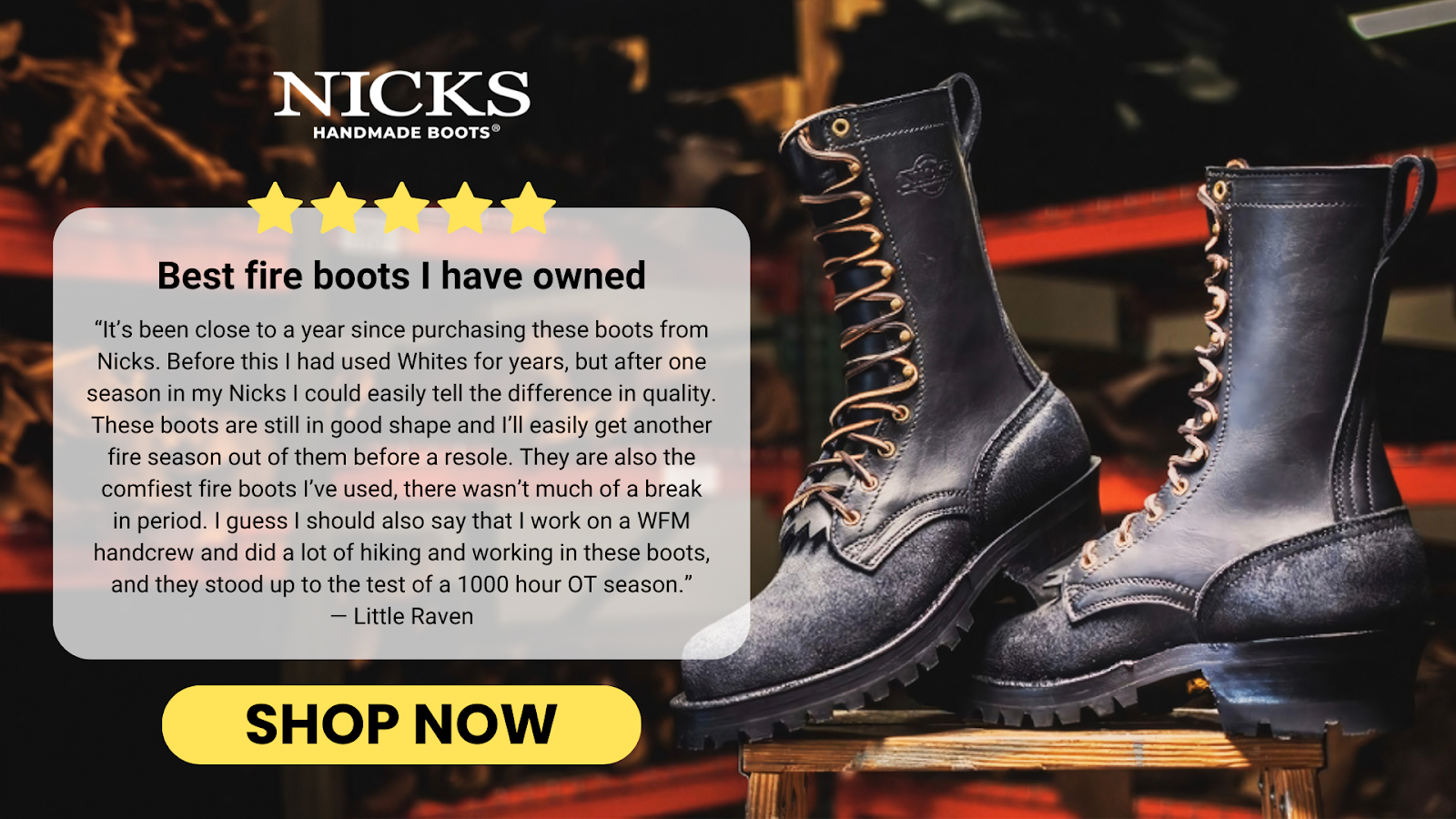
Final Thoughts
Softening leather boots is an essential tool for anyone looking to enhance the comfort and durability of their footwear. It offers practical advice and a solid understanding of leather care, tailored to different types of leather. Through various softening techniques and the emphasis on selecting the right products, the article ensures boot owners can maintain both fit and quality.
This approach not only improves wearability but also extends the life of the boots. Overall, the guide is indispensable for both everyday wearers and professional users who prioritize footwear care.
Read also:
Frequently Asked Questions About How To Soften Leather Boots
What is the best natural oil to use for softening leather boots?
Neatsfoot oil is ideal for softening leather boots as it deeply penetrates and enhances flexibility. It helps maintain the leather's durability while ensuring it does not become overly soft. Use it sparingly to avoid saturating the leather.
Can I use a hair conditioner to soften my leather boots?
It's not recommended to use hair conditioner on leather boots as it may not be suitable for the material and could damage the finish. Products specifically formulated for leather are safer and more effective. Hair conditioners might leave residues or alter the appearance of the leather.
How often should I apply conditioner to my leather boots?
Apply leather conditioner every 3 to 6 months, depending on how often you wear your boots and the conditions they're exposed to. Regular conditioning keeps the leather supple and prevents it from drying out and cracking. Adjust the frequency based on seasonal changes and wear patterns.
Is it safe to use a boot stretcher on all types of leather boots?
Using a boot stretcher is generally safe for most types of leather, but should be done cautiously with softer leathers like suede. Overstretching can damage the leather, so it’s important to monitor the process closely. Always follow the manufacturer's guidelines for the best results.
What are the risks of over-conditioning leather boots?
Over-conditioning leather boots can lead to the leather becoming too soft, compromising its structural integrity. Excess conditioner can also seep into the seams and weaken the stitching. It's important to allow the leather to fully absorb the conditioner before applying more.
How can I soften leather boots without using oils or conditioners?
To soften leather boots without chemicals, wear them gradually around the house using thick socks to gently stretch the material. You can also manually flex the boots with your hands. These methods mimic natural wear and help the boots conform to your feet.
What should I do if the softening product changes the color of my boots?
If a softening product changes the color of your boots, immediately stop its use and clean the area gently. Test any new product on a small, hidden part of the boot first. If discoloration persists, seek professional advice to address the issue.
How long does it typically take to soften new leather boots?
Softening new leather boots usually takes a few weeks of regular wear. Pairing this with proper conditioning will expedite the softening process. The time can vary based on the leather type and the care methods employed.
Can all types of leather boots be treated with water-repellent sprays?
Most leather boots can be treated with water-repellent sprays, but always verify compatibility with your specific type of leather. Applying a suitable water-repellent can protect your boots from moisture damage. Follow the application instructions carefully to ensure effective protection.
What is the best way to store leather boots to maintain their softness?
Keep leather boots in a cool, dry place away from sunlight to prevent drying and fading. Use boot trees or newspapers to help maintain the shape and prevent creases. Proper storage helps preserve the softness and condition of the leather.



